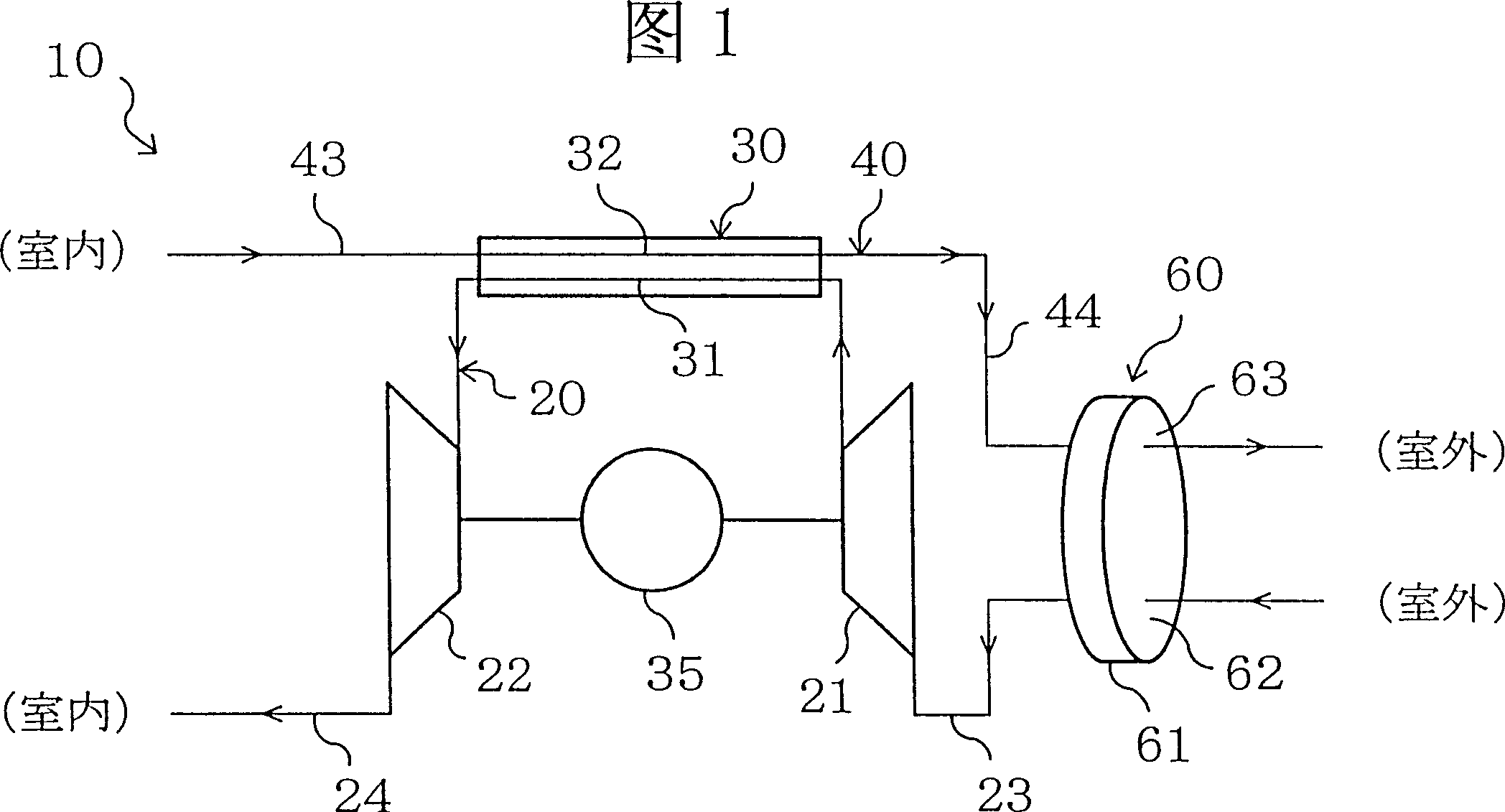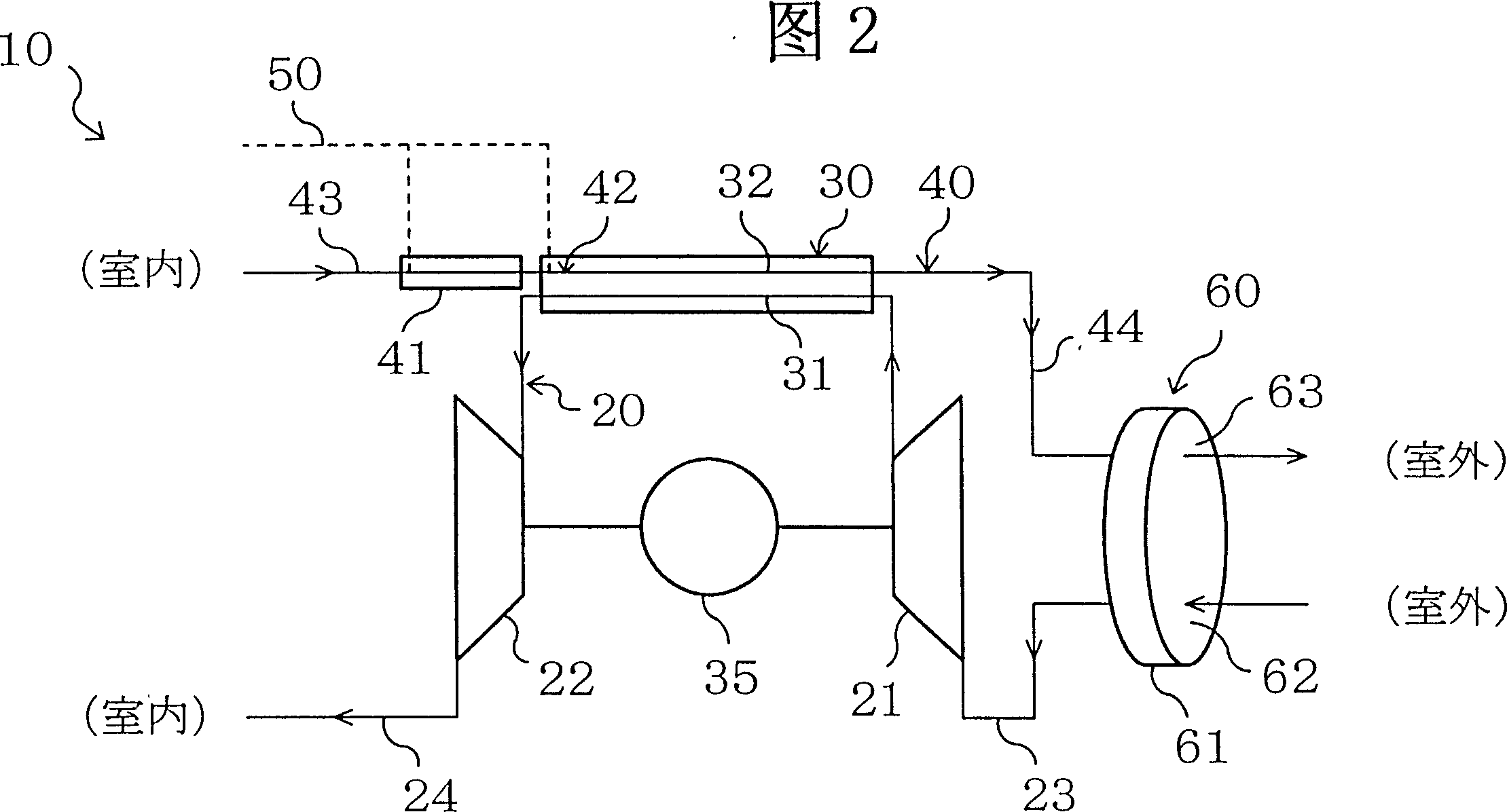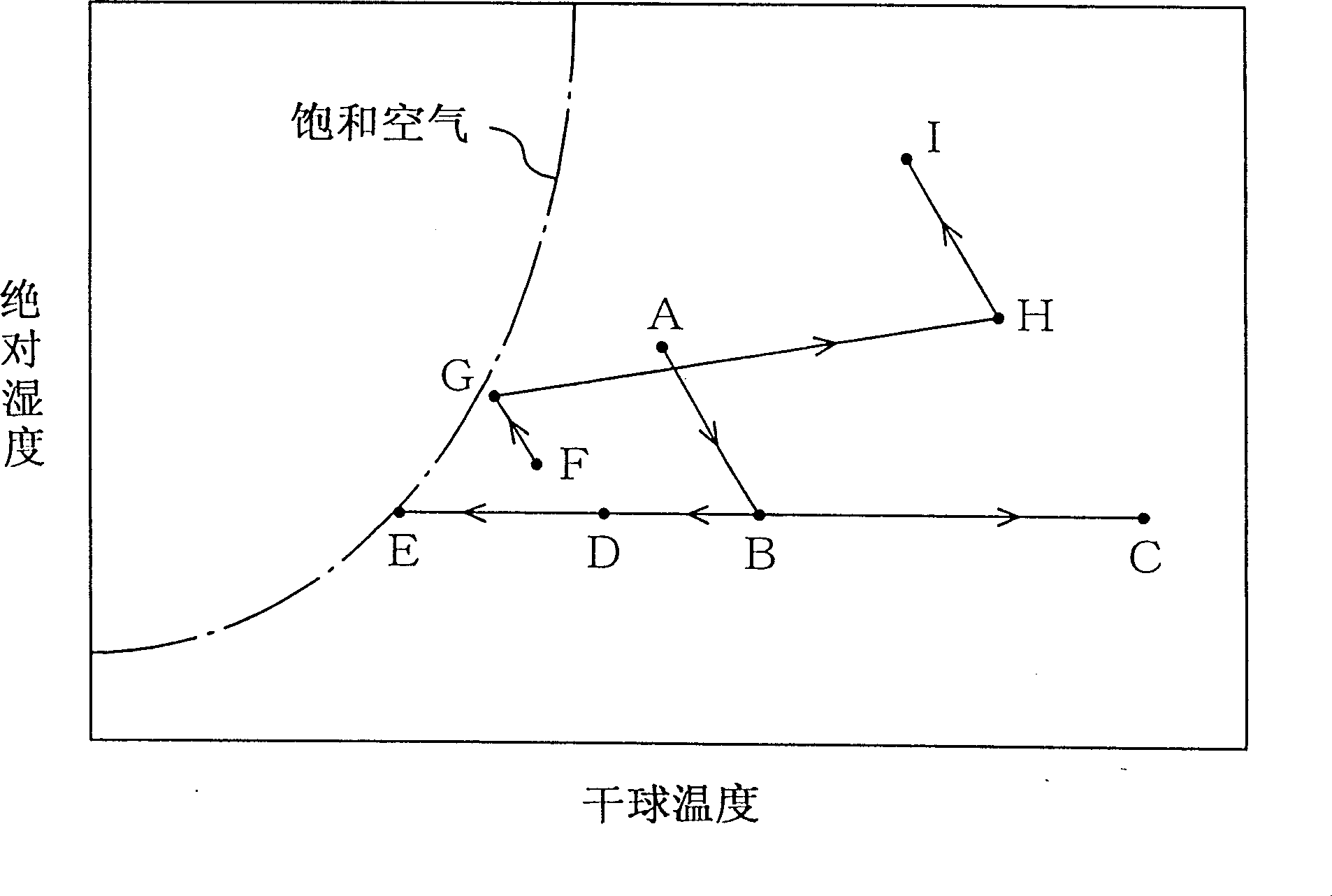Air conditioner
A kind of air conditioning and air technology, which is applied in the direction of air treatment details, air conditioning system, air treatment equipment, etc., and can solve the problems of complex structure, low degree of freedom in design, loss of compressor input power, etc.
- Summary
- Abstract
- Description
- Claims
- Application Information
AI Technical Summary
Problems solved by technology
Method used
Image
Examples
Embodiment 1
[0104] As shown in FIG. 1 , the air-conditioning device 10 of this embodiment is composed of a first system 20 , a second system 40 , and a dehumidification mechanism 60 as a dehumidification mechanism to cool the room.
[0105] The above-mentioned first system 20 is formed by connecting the compressor 21, the heat exchanger 30, and the expander 22 sequentially through conduits, which can make the first air flow for air circulation refrigeration. The above-mentioned first system 20 is provided with a first inlet conduit 23 connected to the inlet side of the compressor 21 and a first outlet conduit 24 connected to the outlet side of the expander 22 . One end of the first inlet duct 23 is opened to the outside, and outside air as the first air is sucked in. One end of the first outlet duct 24 opens into the room, and guides the low-temperature first air from the expander 22 into the room.
[0106] The above-mentioned second system 40 is configured by connecting the second inlet...
Embodiment 2
[0125] In the second embodiment of the present invention, the humidification cooler 41 and the water introduction part 42 are provided on the basis of the first embodiment. Other structures are the same as in Embodiment 1.
[0126] As shown in FIG. 2 , the above-mentioned humidification cooler 41 is installed in the middle of the second inlet duct 43 , that is, on the upstream side of the heat exchanger 30 in the second system 40 . In the humidification cooler 41 , a moisture-permeable membrane that allows moisture to permeate is provided, and the moisture-permeable membrane separates and forms an air space and a water space. The second inlet duct 43 is connected to the air space, and the second air flows therein. A water delivery conduit 50 is connected to the water space, and the inside thereof is supplied with channel water and the like. Furthermore, in the humidification cooler 41, the moisture in the water space is supplied to the second air in the air space through the...
Embodiment 3
[0136] Embodiment 3 of the present invention is based on the above-mentioned Embodiment 2, and a preheater 33 is provided, and a heat exchanger 30 is composed of a first heat exchange part 30a and a second heat exchange part 30b. Other structures are the same as in Embodiment 2.
[0137] like Figure 4 As shown, the first heat exchange part 30a and the second heat exchange part 30b of the heat exchanger 30 are respectively provided with a passage 31 on the heat releasing side and a passage 32 on the heat absorbing side. The passage 31 on the heat release side is connected to the compressor 21 on the side of the first heat exchange unit 30a, and connected to the expander 22 on the side of the second heat exchange unit 30b. The passage 32 on the heat-absorbing side is connected to the second inlet pipe 43 on the side of the second heat exchange part 30b, and is connected to the second outlet pipe 44 on the side of the first heat exchange part 30a.
[0138] The above-mentioned ...
PUM
 Login to View More
Login to View More Abstract
Description
Claims
Application Information
 Login to View More
Login to View More - R&D
- Intellectual Property
- Life Sciences
- Materials
- Tech Scout
- Unparalleled Data Quality
- Higher Quality Content
- 60% Fewer Hallucinations
Browse by: Latest US Patents, China's latest patents, Technical Efficacy Thesaurus, Application Domain, Technology Topic, Popular Technical Reports.
© 2025 PatSnap. All rights reserved.Legal|Privacy policy|Modern Slavery Act Transparency Statement|Sitemap|About US| Contact US: help@patsnap.com



